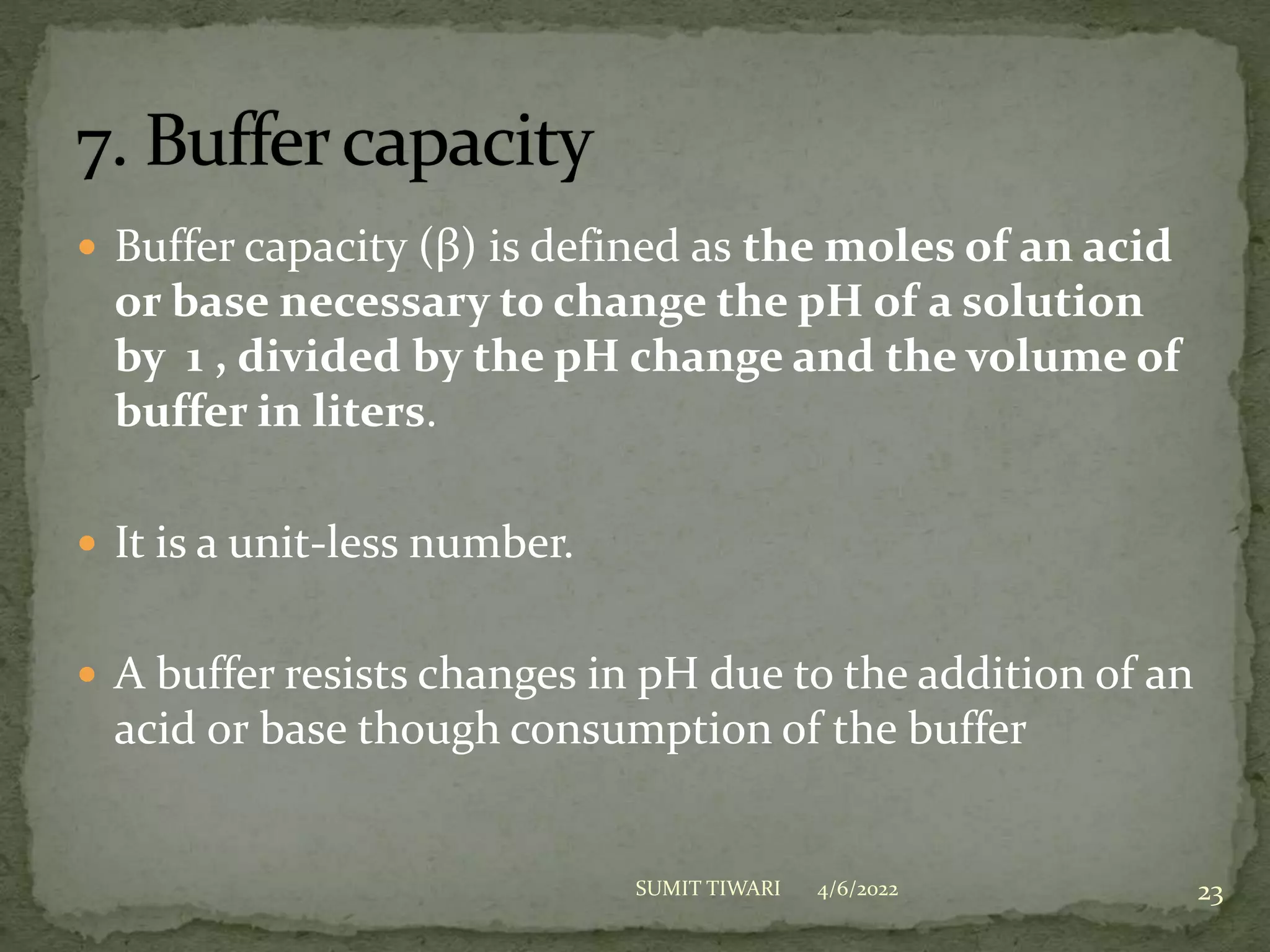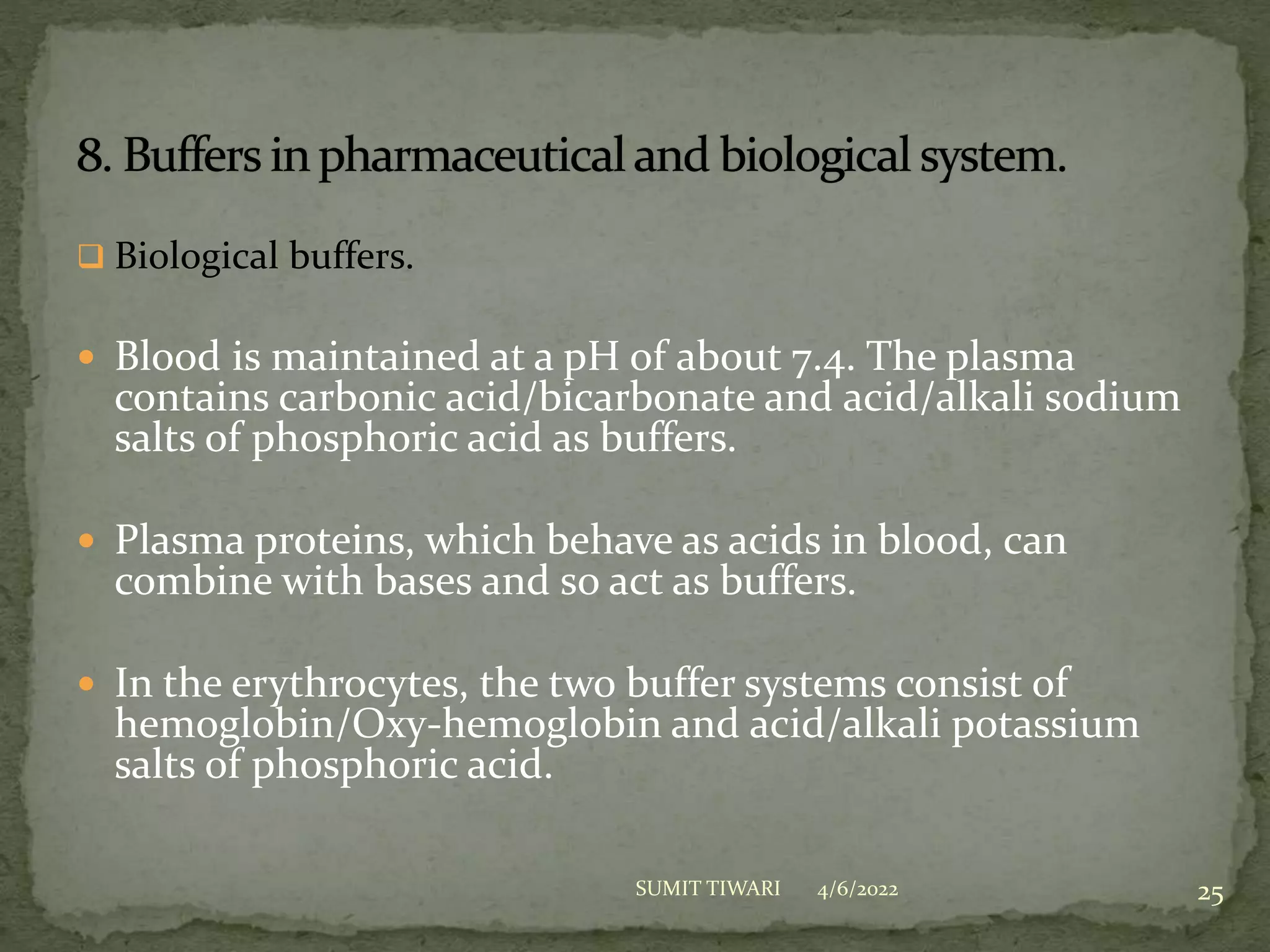The document provides a comprehensive overview of pH, buffer solutions, and their importance in biological and chemical contexts. It details the pH scale, methods of measuring pH, and explains the roles of biological buffers in the human body. Additionally, it covers isotonic solutions and their significance in pharmaceutical applications, particularly regarding osmotic pressures and the behavior of red blood cells in different saline conditions.



![ In water solution, sodium acetate is completely
dissociated into sodium (Na+) and acetate (CH3COO-)
ions.
The hydrogen ion concentration of the buffer solution
is given by the expression:
[H+] = Ka [CH3COOH/CH3COO-]
4/6/2022 4
SUMIT TIWARI](https://image.slidesharecdn.com/unit5thpp-220122155229/75/UNIT-5TH-pH-buffers-and-Isotonic-solutions-4-2048.jpg)

















![ Equation of Henderson-Hasselbalch
The Henderson-Hasselbalch equation can be written
as:
pH = pKa + log10 ([A–]/[HA])
Where [A–] denotes the molar concentration of the
conjugate base (of the acid) and [HA] denotes the
molar concentration of the weak acid.
4/6/2022 22
SUMIT TIWARI](https://image.slidesharecdn.com/unit5thpp-220122155229/75/UNIT-5TH-pH-buffers-and-Isotonic-solutions-22-2048.jpg)
















